NVIDIA’s new RTX 50 series was announced in January 2025, introducing the Blackwell architecture to the public. This new generation brings significant improvements in terms of performance, next-gen DLSS 4, enhanced ray tracing, GDDR7 memory, and AI-driven optimizations.
The RTX 50 series currently includes four cards, where RTX 5070 Ti is positioned as a mid-range option in both price and performance. It serves as a bridge for gamers who want a taste of 4K gaming but primarily play at 1440p for optimal performance. While it can handle 4K gaming with upscaling technologies like DLSS, it is best suited for high-refresh-rate 1440p gaming.
Today, we are testing the INNO3D GeForce RTX 5070 Ti X3, an enhanced variant featuring factory overclocking, improved cooling, reduced noise levels, and a more robust design for better long-term performance.
Design:
For high-end gaming, efficient cooling and power management are essential. Without proper thermal control, a GPU may throttle performance, leading to frame drops, system instability, or overheating. The INNO3D GeForce RTX 5070 Ti X3 addresses this challenge with a custom cooling solution, ensuring consistent performance under load.
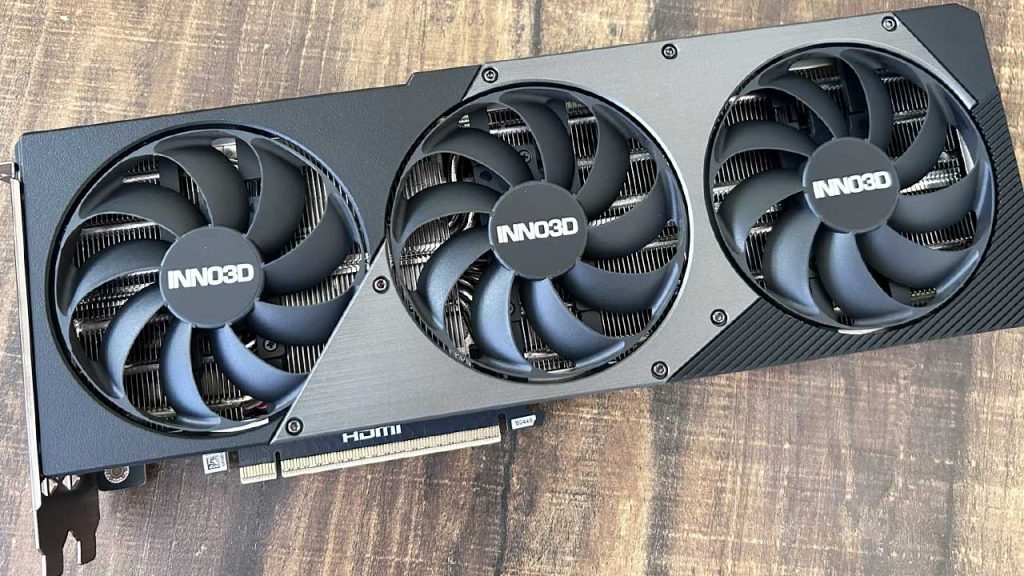
The card features a Triple-Fan cooling system, branded as “X3”, which significantly improves heat dissipation. The three-fan setup efficiently distributes airflow, keeping temperatures in check even during extended gaming sessions. This cooling solution helps the card maintain stable performance and lower thermals, especially when overclocked.
Despite its triple-fan configuration, the INNO3D RTX 5070 Ti X3 is SFF-ready (Small Form Factor compatible). The compact design allows it to fit into mid-tower cases without requiring major modifications.
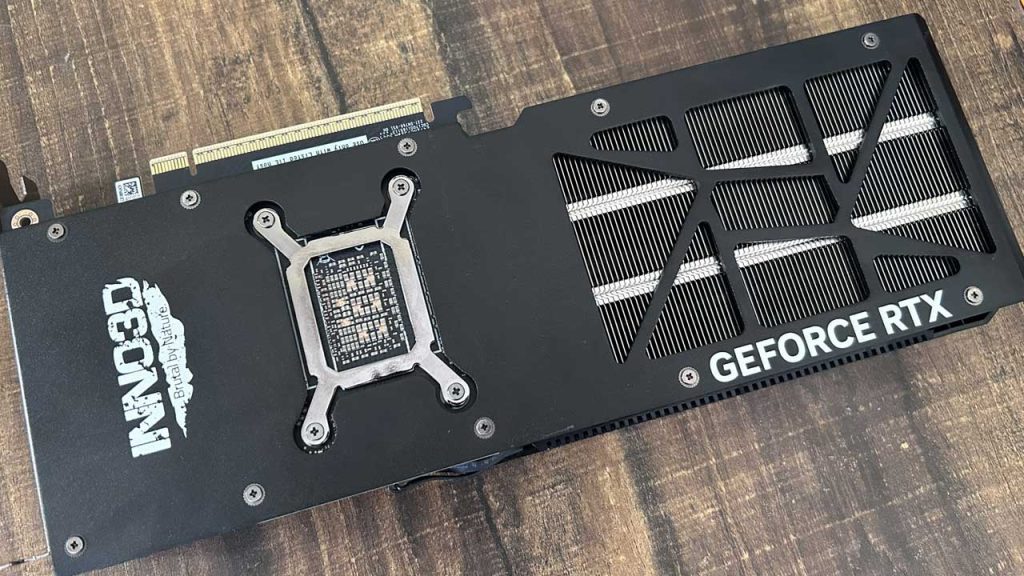
Additionally, the card features 6x nickel-plated composite heat pipes and a metal backplate, which further enhance heat dissipation. This design enables the GPU to sustain higher clock speeds for longer periods without overheating.
Overall, the INNO3D GeForce RTX 5070 Ti X3 is designed for maximum heat transfer efficiency, keeping temperatures low during demanding workloads. While the stock RTX 5070 Ti model offers similar power, the custom cooling and design of the INNO3D variant help it maintain better sustained performance and overclocking potential.
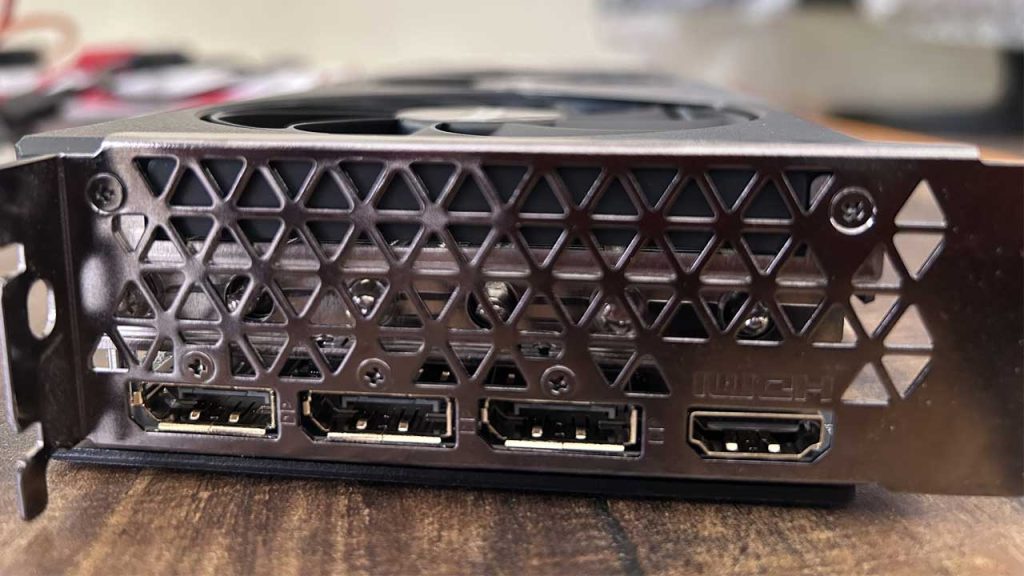
INNO3D GeForce RTX 5070 Ti X3 Specs:
- 8960 Cuda Cores.
- Base Clock – 2295MHz & Boost Clock – 2482MHz.
- 28Gbps 16GB GDDR7 256-bit VRAM. (896 GB/sec Memory Bandwidth).
- Connectivity Ports – 3x DisplayPort 2.1b & 1x HDMI 2.1b.
- Upto 4 multi-monitor support.
- Maximum Digital Resolution – 4K at 480Hz or 8K at 165Hz with DSC.
- HDCP – 2.3
- Minimum PSU Requirement: 750 watts.
- RTX – Yes.
- DirectX 12.
- Length x Height x Width – 300mm x 116mm x 41mm.
- Supplementary Power Connectors – 2x PCIe 8-pin cables (adapter in box) OR 300 W or greater PCIe Gen 5 cable
Performance:
While testing the latest games at maximum settings with RTX enabled, the INNO3D GeForce RTX 5070 Ti X3 delivered a stable 70 FPS at 1440p. Performance remained consistent with minimal fluctuations, and the visual quality was excellent. Despite extended gaming sessions, the card maintained low noise levels, thanks to its efficient cooling system.
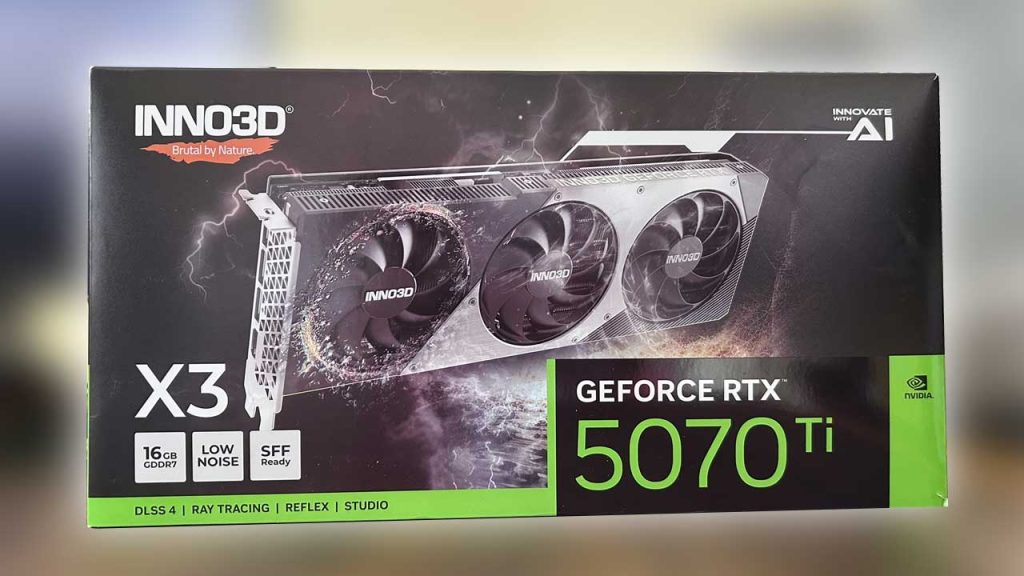
With its optimized heat dissipation design, the GPU temperature gradually increased by about 2°C every 15–20 minutes, stabilizing between 70–75°C under load. This controlled thermal performance is a key advantage of the INNO3D RTX 5070 Ti X3, ensuring sustained high performance without overheating.
For 1440p gaming, the INNO3D RTX 5070 Ti X3 is an excellent choice and a solid upgrade for gamers looking for high performance at this resolution. While it can handle 4K gaming, performance drops below 60 FPS on Ultra settings without RTX enabled. However, with optimized settings (such as DLSS and adjusted graphics presets), 4K gaming is still enjoyable with smooth performance.
During testing with games like Assassin’s Creed: Shadows, Hogwarts Legacy, and Red Dead Redemption 2, our primary focus was 1440p, as this resolution provides the best balance of performance and visual fidelity. While 4K gaming is possible, running RTX On and Ultra settings requires a higher-end GPU for truly smooth gameplay.
In Fortnite, the card maintained 60–70 FPS at 1440p with RTX On, delivering a fluid and responsive gaming experience. Below are detailed benchmarking results, tested with V-Sync and HDR enabled, which slightly increased GPU load but still produced satisfying performance.
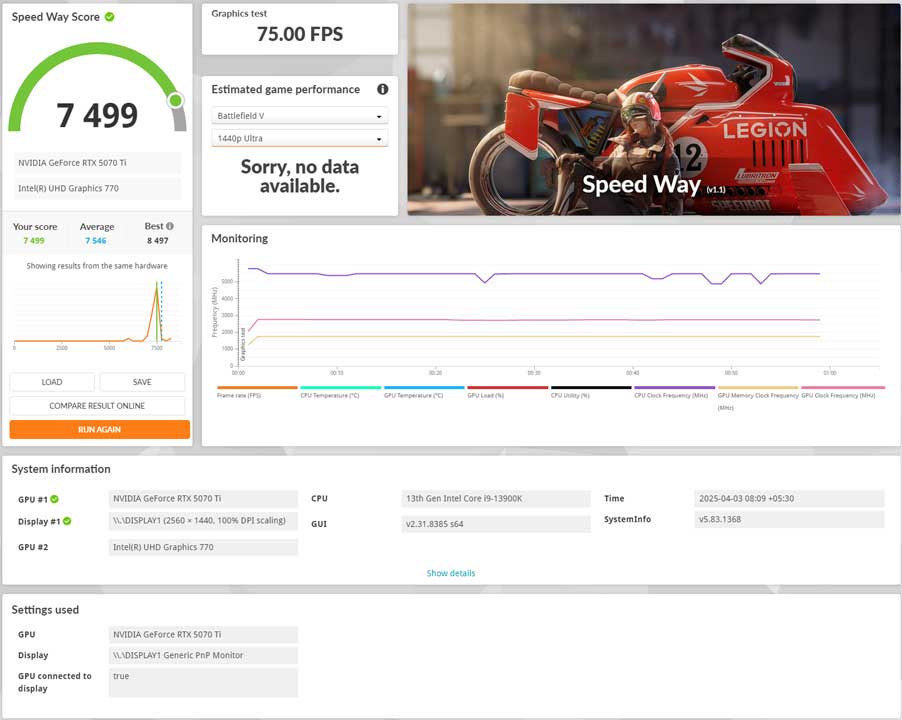
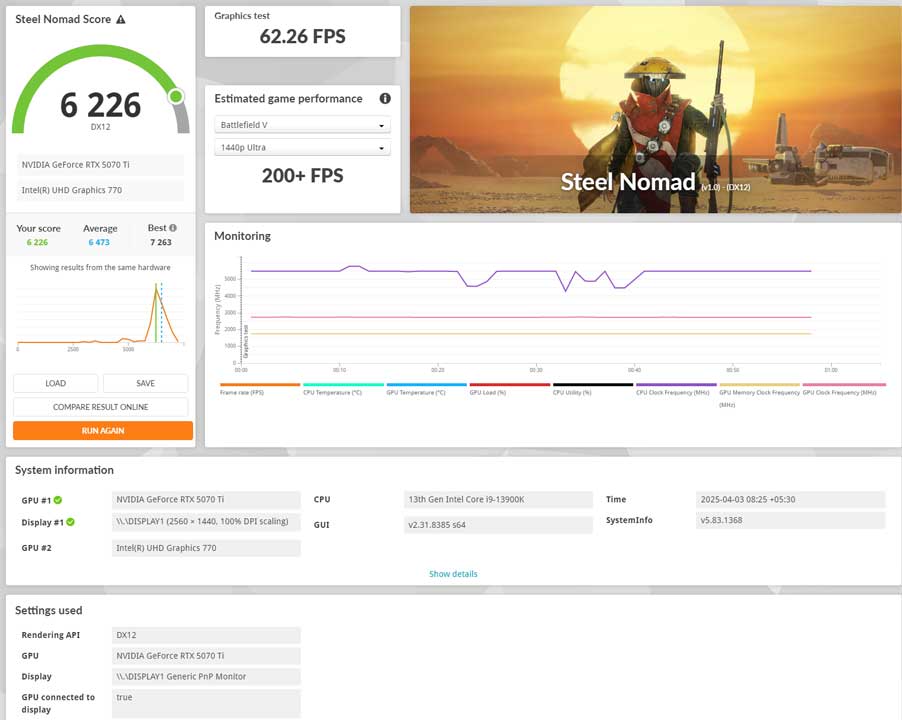
4070 Ti vs 5070 Ti – Which is best & why?
If you’re wondering how much of a performance boost you’ll get by upgrading from the RTX 4070 Ti, the key difference lies in the architecture.

The RTX 4070 Ti, built on the Ada Lovelace architecture, delivers excellent 1440p performance but is considered an entry-level option for 4K gaming. It also remains limited to DLSS 3. On the other hand, the RTX 5070 Ti, powered by Blackwell architecture, has shown a 10–15% performance improvement in high-resolution gaming based on various benchmarks. This makes the 5070 Ti a better option for demanding 4K gaming, while the 4070 Ti remains a solid choice for 1440p-focused gamers.
Ignoring scalper markups, the RTX 5070 Ti launched at $749, while the RTX 4070 Ti debuted at $799, meaning the newer card is more affordable at launch. However, availability is a challenge. The RTX 4070 Ti is widely available, while the RTX 5070 Ti may take time to restock, leading to price fluctuations.
Since scalpers are reselling cards at inflated prices, it’s best to purchase from official retailers or trusted sources to avoid overpaying. If you’re looking for a more budget-friendly and readily available option, the RTX 4070 Ti is still a viable alternative. It’s advisable to compare current prices from reputable retailers to make an informed purchasing decision.
Verdict:
The INNO3D GeForce RTX 5070 Ti X3 is a powerful choice for 1440p gaming, delivering stable and uncompromising performance at this resolution. If you’re looking for a cutting-edge GPU that can handle modern games smoothly, the 5070 Ti is one of the latest options available.
Designed for consistent performance, this GPU can boost clock speeds when needed, ensuring smooth gameplay under load. Its robust build and efficient cooling system help manage heat effectively, allowing it to outperform its predecessors in both performance and thermal efficiency.
However, for 4K gaming, the 5070 Ti is not the most ideal choice, as higher-end GPUs are better optimized for resource-intensive graphics. While it can handle 4K with adjusted settings, those seeking no-compromise 4K performance should consider more powerful options.

